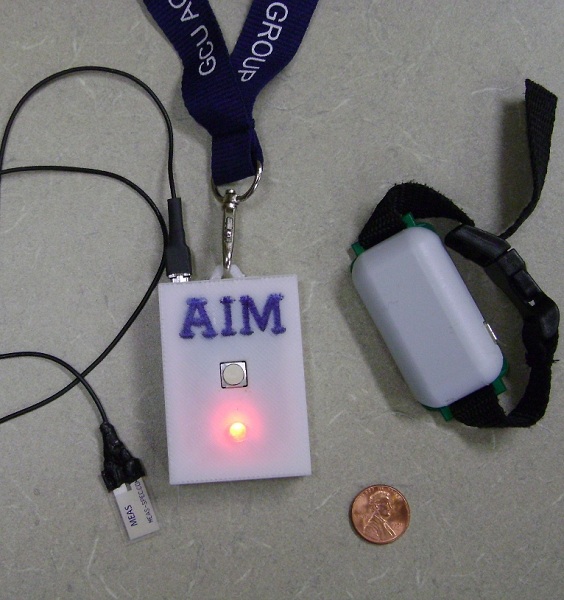 |
Monitoring of Ingestive Behavior, Diet and Energy Intake |
The prevalence of obesity in developed countries is increasing at an alarming rate. Obesity contributes to an increased risk of heart disease, hypertension, diabetes, and some cancers and is now considered a risk factor for cardiovascular disease. The objective of this research is to investigate application of novel noninvasive devices and pattern recognition methods to perform studies of human food intake behavior and produce objective estimates of volumetric and caloric food intake that will be relevant for identifying effective measures to treat or prevent diseases like obesity. Such devices and methods could extend our understanding of causes of obesity, and the monitoring devices created in this study could be used for monitoring of obese patients and as a part of a therapy potentially improve quality of life and decrease the morbidity and mortality associated with obesity. The goal of this study is to design and perform a pilot investigation which will provide preliminary data that objective observations of mastication (chewing) and deglutition (swallowing) by a wearable, non-intrusive monitoring device can provide statistically reliable estimates of eating habits by providing objective measures of deglution frequency, duration of mastication and identifying periods of food intake with sufficient sensitivity and specificity. The aims of the proposed research include design of the wearable sensors and associated signal processing methods; development of pattern recognition methodologies that will automatically detect instances of deglution and mastication from sensor recordings; development of pattern recognition methods to automatically identify periods of food intake based on detected chewing and swallowing; and to validate these device and methodologies on a group of human subjects. Modern methods of computational intelligence such as artificial neural networks and fuzzy logic will be used along with statistical methods to achieve the highest 'accuracy of pattern recognition.
Devices and methods developed in this project:
- Automatic Ingestion Monitor (AIM)
- The Diet Diary Android application
- Laboratory Instrumentation Module for Monitoring of Food Intake
Click on the link above to learn about a novel wearable device that can objectively and reliably monitor food intake of individuals.
Journal Publications
- Evaluation of Chewing and Swallowing Sensors for Monitoring Ingestive Behavior
- Automatic food intake detection based on swallowing sounds
- Automatic Identification of the Number of Food Items in a Meal using Clustering Techniques based on the Monitoring of Swallowing and Chewing
- A Sensor System for Automatic Detection of Food Intake Through Non-Invasive Monitoring of Chewing
- Detection of food intake from swallowing sequences by supervised and unsupervised methods
- The energetics of obesity: a review
- Automatic detection of swallowing events by acoustical means for applications of monitoring of ingestive behavior
- Toward objective monitoring of ingestive behavior in free living population
- Reply to "Comment on ’Non-invasive monitoring of chewing and swallowing for objective quantification of ingestive behaviour"
- Non-invasive monitoring of chewing and swallowing for objective quantification of ingestive behavior
Refereed Conference Publications
- Estimation of Feature Importance for Food Intake Detection Based on Random Forests Classification
- A Robust Classification Scheme for Detection of Food Intake Through Non-Invasive Monitoring of Chewing
- Design of a Instrumentation Module for Monitoring Ingestive Behavior in Laboratory Studies
- Swallowing Detection by Sonic and Subsonic Frequencies: a Comparison
- Detection of Periods of Food Intake using Support Vector Machines
- Objective prediction of ingested food mass using support vector regression
- Recognition of Swallowing Sounds Using Time-Frequency Decomposition and Limited Receptive Area Neural Classifier
- Limited receptive area neural classifier for recognition of swallowing sounds using short-time Fourier transform
- Limited receptive area neural classifier for recognition of swallowing sounds using continuous wavelet transform